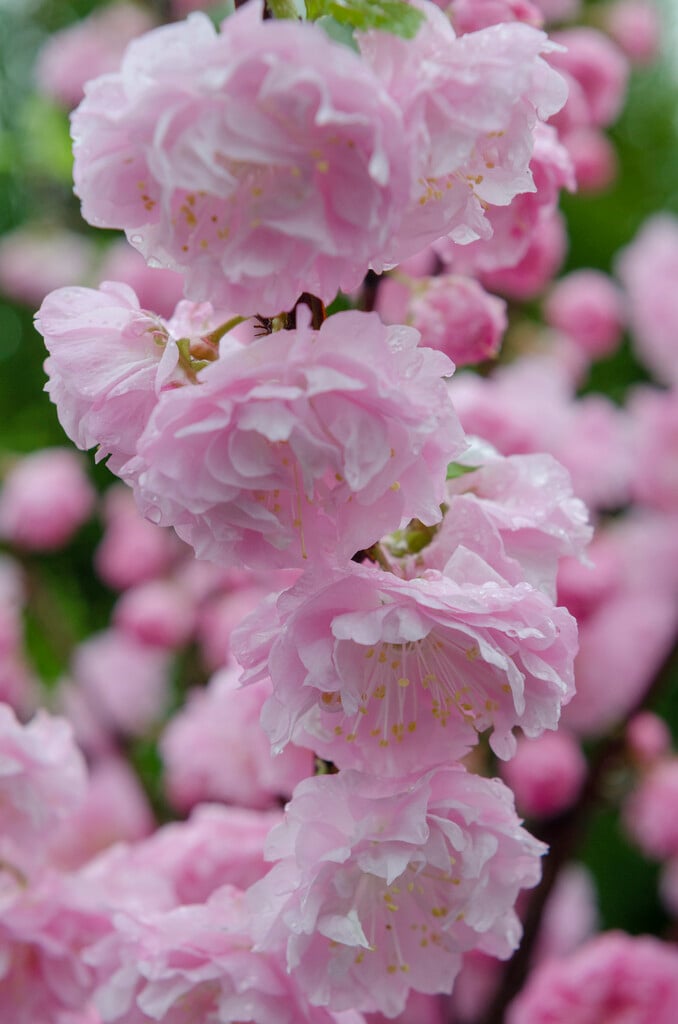Prunus triloba
flowering almond
A densely branched deciduous shrub or small tree with dark green, often three-lobed, leaves. Bowl-shaped pink flowers 3cm across appear on bare branches from early to mid-spring, followed by small, spherical, red fruit
Size
Ultimate height
2.5–4 metresTime to ultimate height
5–10 yearsUltimate spread
2.5–4 metresGrowing conditions
Moisture
Moist but well–drainedpH
Acid, Alkaline, NeutralColour & scent
| Stem | Flower | Foliage | Fruit | |
| Spring | Pink | Green | ||
|---|---|---|---|---|
| Summer | Green | Red | ||
| Autumn | Green | |||
| Winter |
Position
- Full sun
- Partial shade
Aspect
East–facing or South–facing or West–facing
Exposure
Sheltered Hardiness
H6Botanical details
- Family
- Rosaceae
- Native to GB / Ireland
- No
- Foliage
- Deciduous
- Habit
- Bushy
- Genus
Prunus can be deciduous or evergreen trees or shrubs with showy flowers in spring, and often good autumn foliage colour. Some have edible fruit in autumn, and a few species have ornamental bark
- Name status
Correct
- Plant range
- N&E China to North Korea
How to grow
Cultivation
Grow in any moist but well-drained, moderately fertile soil preferably in full sun
Propagation
Propagate by seed sown in containers outdoors in autumn; or by softwood cuttings, with bottom heat, in early summer
Suggested planting locations and garden types
- City and courtyard gardens
- Cottage and informal garden
- Wildlife gardens
- Flower borders and beds
Pruning
Pests
May be susceptible to aphids and caterpillars
Diseases
May be susceptible to bacterial canker, blossom wilt, brown rot, honey fungus and silver leaf. High Risk Host for Xylella fastidiosa
Get involved
The Royal Horticultural Society is the UK’s leading gardening charity. We aim to enrich everyone’s life through plants, and make the UK a greener and more beautiful place.
